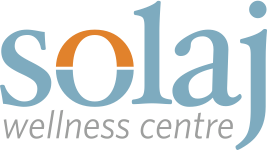What is Osteoarthritis?
The term arthritis refers to inflammation of the joints. It’s derived from 2 Greek words: arthro- (joint) + -itis (inflammation). There are over 100 conditions classified in the arthritis category, however osteoarthritis is by far the most common form, affecting about one in ten adult Canadians.
Osteoarthritis is a joint disease that affects mostly cartilage. However its effects often spread out to surrounding tissues.
What Causes Osteoarthritis?
Osteoarthritis is more common as we age but can affect anyone. It is generally caused by progressive wear and tear on our joints that results in the breakdown of our joint cartilage. And it can also be triggered or accelerated by joint injuries. It slows down cellular metabolic functions that affect normal cell structure.
Cartilage plays an essential role in our joints: it absorbs shock from outside stresses and lubricates joint surfaces, allowing them to move smoothly. When cartilage breaks down, the bones start to grind against each other, creating friction and inflammation in the joint. Changes in the joint also affect the surrounding soft tissues (ligaments, muscles, and tendons) causing them to tighten up and spasm. These changes are what cause you to experience symptoms such as pain, swelling, stiffness and even grinding.
Typical Experiences
- Pain in the joint that increases with overuse and decreases with rest
- Stiffness in the morning (lasting about 15-20 minutes) or after periods of rest
- Joint pain that may be sensitive to weather changes
- Enlarged and/or swollen joints
- Grinding or crunching (crepitus) sensation with movement
- Reduced ability to walk, hold proper posture or maintain coordination due to pain and stiffness
Osteoarthritis most commonly affects weight bearing joints of the hips, knees and low back. It also can affect the neck, base of the thumb, wrist and hands and big toe. Other joints are less commonly affected unless there has been a previous injury or a lot of stress to the area.
Common Symptoms of Osteoarthritis
The degenerative process itself may not be painful, however the resulting inflammation and irritation to surrounding muscles, ligaments and tendons usually cause you to experience uncomfortable and sometimes debilitating symptoms. Reduced range of motion and swelling of surrounding tissues often accompany significant, often agonizing pain. Many of these symptoms can interfere with even the most basic daily activities such as walking, going up or down the stairs, brushing your teeth, cooking or even putting on your shoes.
Cold Laser Therapy Osteoarthritis Treatment: Step 1
Cold Laser Therapy Osteoarthritis Treatment: Step 2
Cold Laser Therapy Osteoarthritis Treatment: Step 3
Cold Laser Therapy breaks the cycle of degenerating cartilage and helps to reverse the cycle by delivering light-based energy to cells of tissues that are not healing fast enough, or at all. This energy stimulates specific chemical reactions in the cell to quickly speed up the healing process, resulting in reduced inflammation and the elimination of pain.
Activates Cartilage Production:Promotes the natural cartilage growth process by increasing the production of cellular energy (ATP).
Accelerates Bone Repair:
Stimulates the bone cells to replicate and produce new healthy bone tissue.
Decreases Inflammation:
Speeds up the body's natural inflammation phase and induces the repair phase of healing.
Stimulates Blood Flow:
Increases the delivery of oxygen and nutrients required for healing of the affected cells.
Visit our Cold Laser Therapy Page to learn more about how the treatment works.
Clinical Studies
The following clinical studies are based on the results of BioFlex Cold Laser Therapy:
Cold Laser Therapy for the Treatment of Arthritic Knees [PDF]
